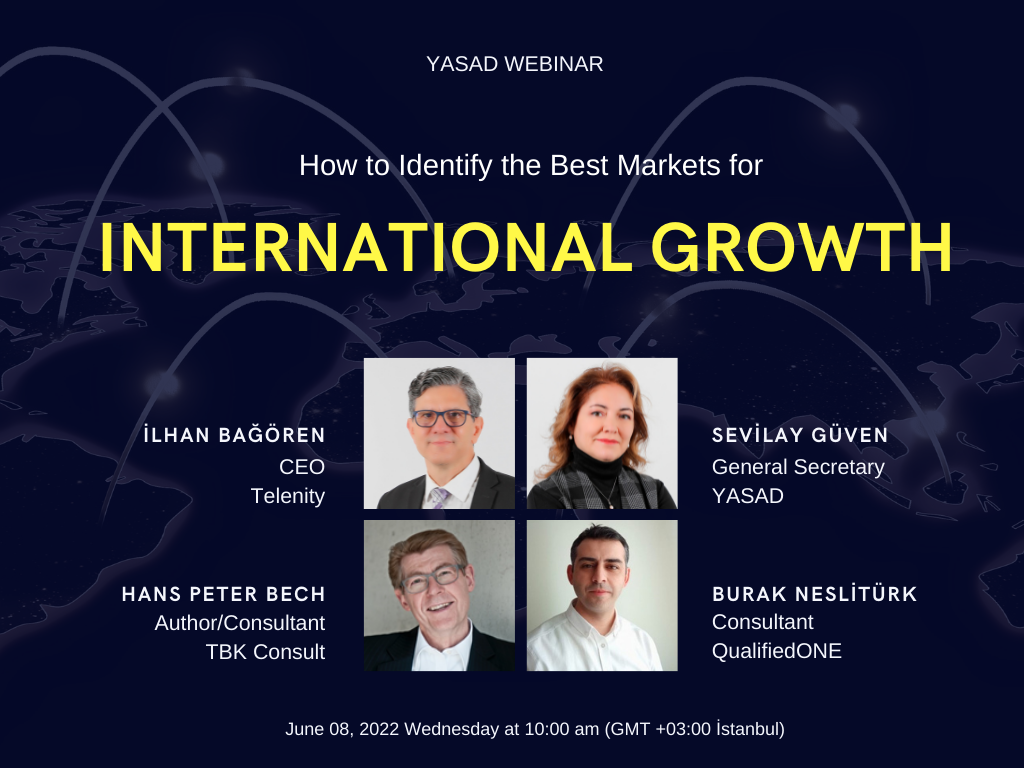How to Identify the Best Markets for International Growth
In this series of webinars, organised by YASAD, we discuss how software companies can grow their international business without having a big budget to invest.
This webinar titled How to Identify the Best Markets for International Growth took place:
Wednesday, June 8th 2022, at 10:00 am Instanbul time (GMT+3).
Click here to watch the recording.
The reason for our interest in global markets is, of course, that they represent much more potential than our domestic markets.
For example, Turkey represents less than two per cent of the global market for software products. This means that 98 per cent of the worldwide market is outside Turkey. The biggest single market in Europe, Germany, represents a little over three per cent, and my own country, Denmark, represents less than a quarter per cent. No matter where you are located, the global market is always vastly bigger than your domestic market.

In the webinar, I will explain when and how you don’t have to pick a market, when and how you can let the markets pick you and finally I will discuss how to identify the best markets when you need to localise your product and have feet on the ground.
Webinar synopsis
Picking one country over another should be based on some facts that justify the choice. Such facts are usually the result of a market analysis or a market assessment – two names for the same thing.
Ideally, you would prefer to have a decision matrix where you can rate the most critical characteristics for your type of product across the markets that you consider. Then pick the one with the best match while you keep exploring new opportunities.
The two main questions for designing a market assessment template are:
- What do we need to know?
- How do we find the information?
As explained in the book, Going Global on a Shoestring, Alexander Osterwalder’s business model environment framework can be used as a generic template for market analysis.
However, it doesn’t answer the two main questions listed above specifically for your product.
A shoestring type of market analysis will focus on answering four questions:
- How big is the market for your product?
- Can you use your current position in this market?
- Can you use your current revenue generation approach in this market?
- How much localisation is required, and which strategic alliances must you forge to get accepted?
Answering these four questions can be done through a mix of desk research and interviews. Through desk research, you should be able to identify all the competitors. In some countries, you can access their annual reports too, and check how they are performing.
Getting a take on the size of the market should help you decide if it is worthwhile considering.
From mapping the competitive landscape, you should get a feeling of what your current position will look like in the new market. Will you be sufficiently differentiated, or will you be too much “me too”?
The devil is in the details; you only get those by talking to potential customers, channel partners and consultants. I will explain how you get sufficient market intelligence without commissioning an expensive market analysis.
The webinar is organised by YASAD, introduced by İlhan Bağören and Sevilay Güven and moderated by Burak Nesliktürk from Qualified ONE.








